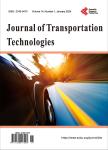Scalable and Accessible Crash Hot Spot Detection for Traffic Law Enforcement
Scalable and Accessible Crash Hot Spot Detection for Traffic Law Enforcement作者机构:Department of Civil and Environmental Engineering University of Wisconsin-Madison Madison WI USA
出 版 物:《Journal of Transportation Technologies》 (交通科技期刊(英文))
年 卷 期:2021年第11卷第2期
页 面:265-283页
学科分类:08[工学] 082303[工学-交通运输规划与管理] 082302[工学-交通信息工程及控制] 0823[工学-交通运输工程]
主 题:Hot Spots Law Enforcement Traffic Data Crash Data
摘 要:Law enforcement agencies have begun utilizing traffic and crash data to improve traffic law enforcement delivery. However, many agencies often do not have the resources or expertise to harness fully the benefits this data offers. A free to use, scalable traffic crash hot spot detection tool was developed to aid law enforcement agency decision makers, statewide to the local municipality level. The tool was developed to identify crash hot spots algorithmically with a range of customizable parameters based on location, date and time, and crash factors, enabling quick, dynamic queries. These capabilities provide the ability for law enforcement agencies to conduct “what if analyses and make data-driven allocation decisions, placing officer resources where they are most needed. The two-step algorithm first identifies potential hot spots based on crash density and then ranks each hot spot using a standardized z-score measure of relative significance. To test the viability of the tool, a pilot was conducted identifying 27 hot spots across Wisconsin where targeted enforcement was then deployed. Despite officer skepticism, results from the pilot found officers at sites targeted for speeding and seatbelt violations were nearly twice as likely to initiate traffic stops compared to non-targeted hot spots. Empirical Bayes before-and-after crash analyses found fatal and injury crashes reduced significantly by nearly 11% during the months with targeted enforcement, while property damage crashes and total crashes were unchanged. Overall, the results show the algorithm can identify hotspots where, coupled with targeted enforcement, traffic safety improvements can be made.



